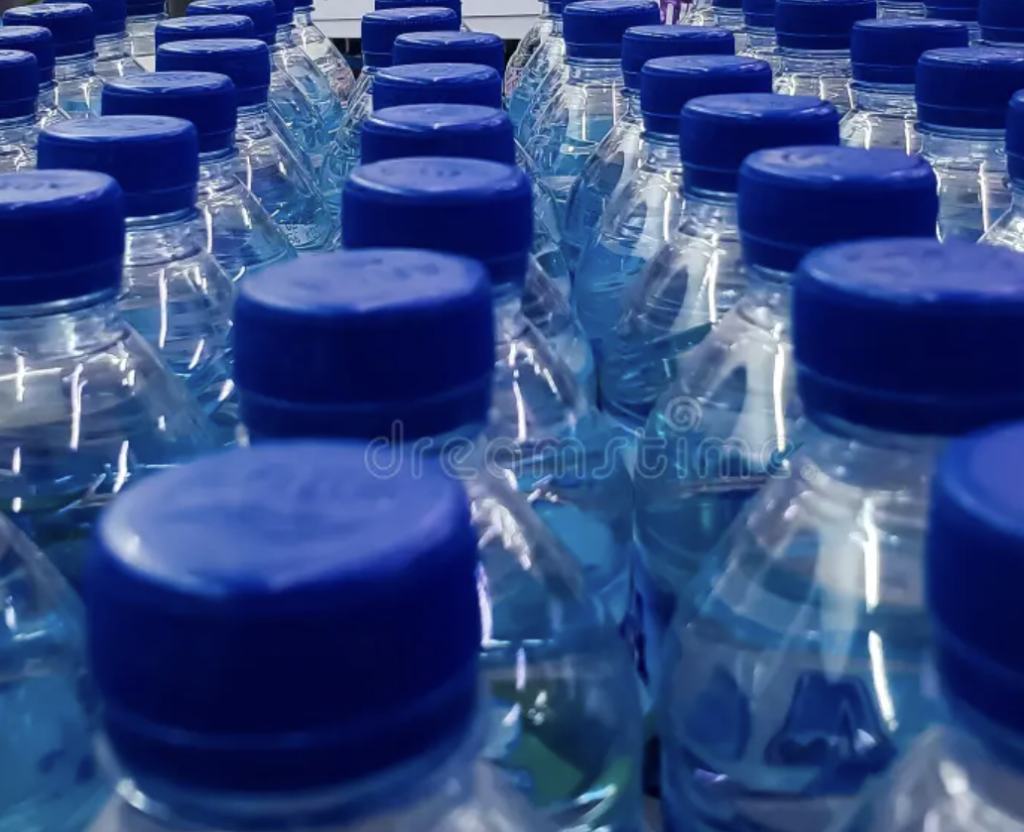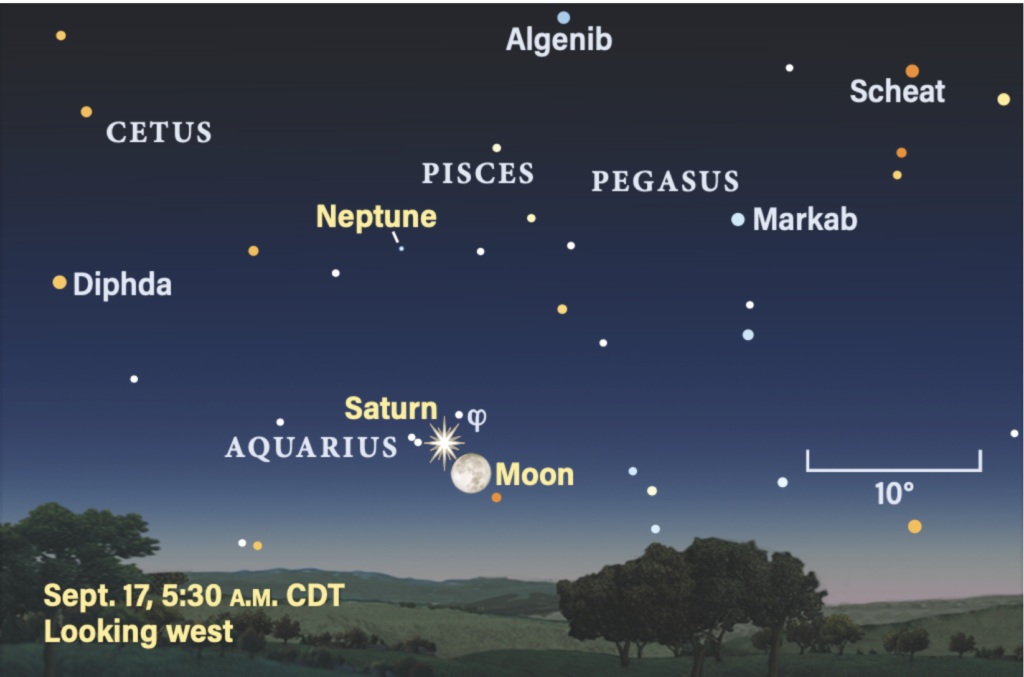Daniel Salzler No. 1270
EnviroInsight.org Six Items September 6, 2024
—————Feel Free To Pass This Along To Others——————
If your watershed is doing something you would like others to know about, or you know
of something others can benefit from, let me know and I will place it in this Information .
If you want to be removed from the distribution list, please let me know.
Please note that all meetings listed are open.
Enhance your viewing by downloading the pdf file to view photos, etc.
The attached is all about improving life in the watershed through knowledge.
If you want to be removed from the distribution list,
please let me know. Please note that all meetings listed are open.
Check our website at EnviroInsight.org
- Hottest Summer Of All Time. According to the State Climatologist, this past summer was the hottest of all time in the Phoenix area with an average temperature (daily average lows plus average daily highs divided by the number of days) of 99.0˚ as of August 29th, the last day of the meteorological summer. In 2023, the average summer temperature was 97.0˚ and in 2020, the average temperature was 96.7˚ . This year the Phoenix area has experienced 57 days at 110˚ or hotter with more possible. last year we had 55 days. Phoenix has also seen 38 mornings in the 90’s and over 100 straight days over 100˚.

The hotter the summer gets, the more important the role trees play. Beyond the obvious benefit of providing hade, trees like all plants, take in carbon dioxide (CO2) and give off oxygen. Climate change could exacerbate carbon losses from soil, and the trees at the edge of forests in rural or urban areas that could be more vulnerable to extreme heat and drought.
In early July, the editor had solar panels installed on his home.
The panels have produced an average of 30 kilowatt hours per day since installation. As of September 2, 2024, my panels have prevented the production of 2,443 pounds of CO2 emissions or the equivalent of what 18 trees could absorb.
If it might be time for you to look into solar panels for your home, contact the editor and I’ll pass along the information I learned so that you can get the best company to do the work. Source: AZ State Climatologist, & Boston University 02/1/6/22
2. If You Have Ever Thought Of Yourself As Someone “Big” Or Important….,,. Gain perspective from the cities of Phoenix (top group of lights) and Tucson (bottom group of lights) as seen from the International Space Station. It may result in a perspective in your head you didd ot have before.

https://www.bing.com/images/search view=detailv2&iss=sbi&form=SBIIDP&sbisrc=ImgDropper&q=imgurl:https%3A%2F%2Findearizona.com%2Fwp-content%2Fuploads%2F2014%2F10%2FPhoenix-Tucson.jpg&idpbck=1&selectedindex=0&id=https%3A%2F%2Findearizona.com%2Fwp-content%2Fuploads%2F2014%2F10%2FPhoenix-Tucson.jpg&ccid=sB3gGyt6&simid=608007193450922257&ck=2935112810873DF0A22F6C4EFAB24F29&thid=OIP.sB3gGyt6IDe5oob3yke7zQHaHw&mediaurl=https%3A%2F%2Findearizona.com%2Fwp-content%2Fuploads%2F2014%2F10%2FPhoenix-Tucson.jpg&exph=2097&expw=2000&cdnurl=https%3A%2F%2Fth.bing.com%2Fth%2Fid%2FR.b01de01b2b7a2037b9a286f7ca47bbcd%3Frik%3DiZvJ%252ftnuI5OmRg%26pid%3DImgRaw%26r%3D0&vt=2&sim=11
3. What Do Antimony (Sb) And Bisphenol A (BPA) Have In Common? If you leave your water bottle in the heat for a short period of time, it is advisable for you to NOT drink the water..Chemicals in plastics, mainly antimony (Sb) and Bisphenol A (BPA) can leach into any liquid in a plastic bottle. Research demonstrates that these chemicals can potentially cause diseases (such as cancer) when consumed.
Antimony leaches from plastic bottles into the the water it holds at 39˚F (4˚C) at 3.18 nanogram per liter or 0.00318 ppb. At 77˚F, the amount of antimony jumps to 0.00688 ppb nd at 158˚ (temperature of water left inside a car for more than 10 minutes, the antimony levels leaching from the plastic jumps to 2.604 ppb.
Virtually all plastic water bottles are made from

polyethylene terephthalate (PET) and typically contain 190–300 mg/kg of antimony. Bottled waters become contaminated during storage due to a release of antimony from PET plastic. Actually, almost all packaged drinks are made from PET plastic. This includes milk, coffee, and acidic juice, among types of food containers.
Adults drinking 2 Liters of water a day, from a plastic bottle may experience an increase in cancer, increased blood cholesterol or decreased blood sugar, due to the consumption of antimony.
Bisphenol A (BPA)
BPA leached from the water bottle to the water when bottles were left in temperatures of 39 oFto an increased amount at 158 F (70 C) to an average of 23.4/ ng/L (0.0234 ppb).

BPA is also a key ingredient in modern plastics found and the inner lining of canned foods, and it may act as hormone disrupter where synthetic chemicals called xenoestrogens (synthetic estrogen) mimic estrogen and attach to estrogen receptors (fooling the body into thinking its estrogen). This process interferes with the normal functioning of hormones. One study in prostate cancer cells showed that very low concentrations of BPA activated the androgen receptor and initiated proliferation of cancer cells, independent of testosterone (Wetherill et al. 2002).
BPA is found in plastics and canned goods. Canned goods of tomato sauce, vegetables and soups may contain the chemical in the inner lining called epoxy resins to avoid corrosion of the metal. Epoxy resins are filled with BPA.
BPA enters the body when, let’s say, a plastic water bottle, is washed, heated or stressed, allowing the chemical to leach into the liquid and then enter the body.
Decrease exposure: Plastic bottles have a recycling code at the bottom of the bottle that looks like a triangular arrow around a number. Water in plastic bottles numbered 1 (Polyethylene Terephthalate (PET) and 2 (High Density Polyethylene (HDPE)), are relatively safe to drink from. Avoid these numbers: 3 (Polyvinyl Chloride), 6 (Polystyrene) and 7 (Other – using more than one resin). Plastics especially with the Number 7 contain BPA.
Don’t use old plastic water bottles. Exposures to plastics chemicals may be greater when the surface is worn down. Don’t wash your plastic drinking bottle in the dishwasher. The big “don’t” of course is “don’t leave water in plastic bottles in your car”.
Use stainless steel or glass/ glass lined bottles for utensils in lieu of plastics. Source: World Health Organization, International Journal of Environmental Research and Public Health.
4. $15M In Federal Funds Could Help Farmers Save Water As They Grow Crops. Irrigation districts in Central Arizona could receive up to $15 million in federal grants to save water while keeping farmland active.
The U.S. Department of Agriculture designated Central Arizona and the Maricopa-Stanfield irrigation and drainage districts as two of 18 selected recipients across the west for the $400 million investment.
The national Farm Service Agency, which provides disaster relief, loans and conservation program funding, will work with the districts on individual agreements to be signed later this year.
Funding criteria is still in the works, but the focus of the program will be on irrigation improvements, shifts in farming practices and crop systems, and other strategies for water conservation. FSA will work with districts to establish projects that match producer conditions and to establish how they account for water conservation.
Producers could switch to more water-saving crops and find new markets, switch to drip irrigation or reducing irrigation to a point that stresses plants but doesn’t have affect on yield, for example.
The program “is not prescriptive in saying ‘this is the only way you can do it,'” confirmed Gloria Montaño Greene, USDA’s deputy undersecretary for farm production and conservation and the former director of Arizona’s FSA.
“We’re trying to meet districts where they are and have them come forward with some changes.”
Surface water only
The funding is expected to result in savings of up to 50,000 acre-feet of water across 250,000 acres of irrigated land in production. How much each district will contribute will be established in the individual agreements.
The caveat is that the program focuses on the reduction of surface water only, which the irrigation districts selected for the program in Arizona lost almost entirely two years ago.
Water declines in Lake Mead forced water cutbacks on some of the “youngest” water users in the Colorado River basin. Under the Drought Contingency Plan, wide areas of farmland in Pinal County faced hard cuts in 2022 and, in 2023, lost all allotment of Central Arizona Project water.
Central Arizona and Maricopa Stanfield Irrigation and Drainage Districts, known as CAIDD and MSIDD, still have some surface water through agreements with the Arizona Water Company and Freeport-McMoRan. The rest of their water comes from groundwater pumping.
This year, MSIDD is scheduled to receive 2,275 acre-feet of surface water, and CAIDD is scheduled to get 7,856 acre-feet, according to current CAP deliveries data. Yerges said that represents less than 3% of their total water use. CAIDD did not respond to the data request.
That means the potential for water conservation with the USDA program is small in Central Arizona. But districts cannot offset that by using more groundwater elsewhere, said Montaño. The equation has to end up in water savings.
The program is explicitly keeping farmland active. Districts cannot account for water savings by putting land out of production.
“This is not to reduce water use and fallow,” said Montaño. “It’s reduce water use and grow, reduce water use and maintain agriculture.”
That distinction is an important one, given that farmers in Pinal County had to leave land unplanted after the Colorado River water cuts and as they made the transition to groundwater and there wasn’t enough infrastructure to take well water to all fields. Yerges, with MSIDD, foresees the irrigation district becoming smaller over time due to pressures of urbanization and reduced water availability. Clara Migoya covers agriculture and water issues for The Arizona Republic and azcentral. Send tips or questions to [email protected]. August 21,202
5. TUCSON WATER WINS NATIONAL EQUITY AWARD – The Alliance for Water Efficiency (AWE) recently selected Tucson Water as the recipient of the 2024 Excellence in Equity Award. Tucson Water, representing the City of Tucson, was selected as the winner for offering a wide variety of conservation incentives that address low-income community needs and maintain long-standing partnerships with organizations that offer plumbing assistance for the Tucson community. Partnerships with organizations like Community Home Repair Projects of Arizona and the Sonora Environmental Research Institute provide the community with free toilet and discounted clothes washer installations, emergency plumbing repairs, and grants, no-interest loans, and rebates for rainwater and gray water harvesting. Tucson Water was also recognized for the City’s Storm to Shade program and Tucson Clean and Beautiful’s Green Stormwater Infrastructure mini grant program’s use of tools, like the Tree Equity Score. Tucson Water was also cited for its collaboration with community ambassadors and use of participatory design processes to drive equitable investment and community engagement. AWE represents hundreds of utilities and organizations dedicated to the efficient and sustainable use of water. Source: Tucson NewsNet Daily Digest Aug 19, 2024
6. Astroshed: Whats Up There? This month Venus is visible in the west for up to an hour after sunset. At magnitude –3.9, it’s easy to spot. On the 4th, a waxing crescent Moon is less than 5° west of Venus. The following evening they switch places, now 7° apart with the Moon southeast of Venus. The pair is still 5° high 30 minutes after sunset.
By mid-September Venus remains quite low after sunset and is 3° from 1st-magnitude Spica — can you spot the star south of Venus, whether with your eye or binoculars? Venus moves into Libra in the last few days of September. It stands 7° high in the western sky 30 minutes after sunset and remains visible for nearly another hour.

Through a telescope, Venus exhibits a 91-percent-lit disk spanning 11″ on the 1st. The phase reaches 85 percent by the 30th, with a slight increase in diameter to 12″.Saturn is visible all night, rising soon after sunset. It reaches opposition on the 8th.
Copyright 2024: EnviroInsight.org
